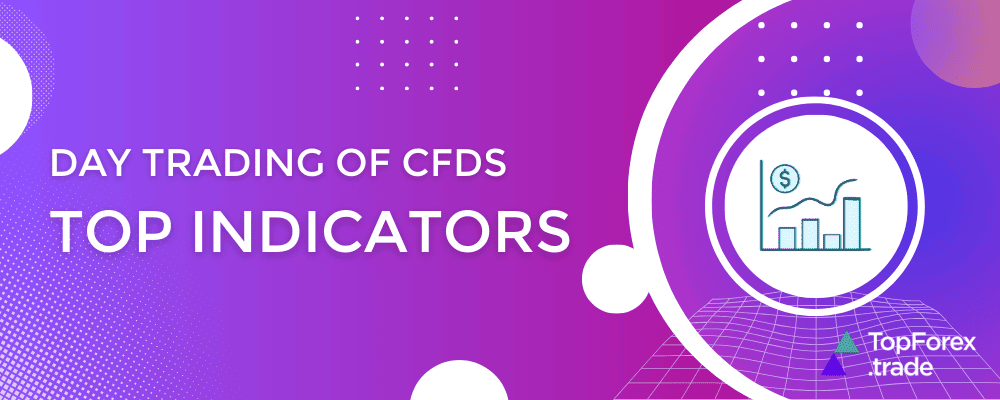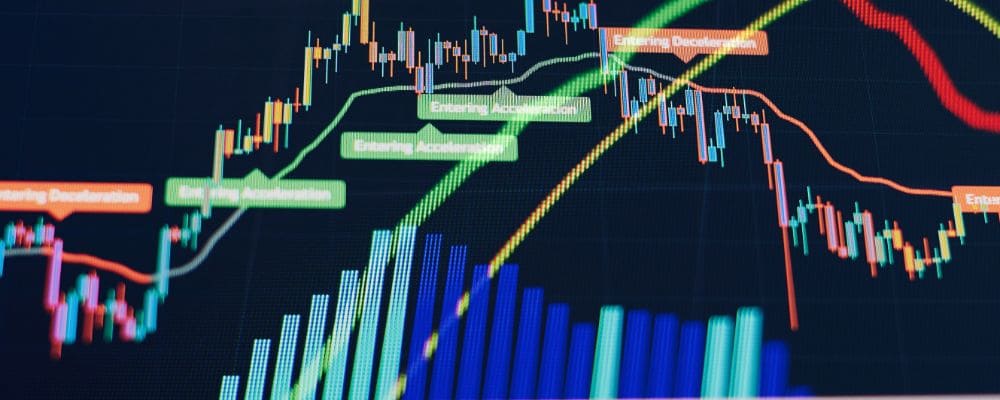Best indicators for CFD day trading

Day trading Contracts for Difference (CFDs) requires precision, strategy, and the right tools to succeed. Among the tools traders rely on, technical indicators play a crucial role in analyzing market conditions, identifying trends, and making informed trading decisions. This article explores the best indicators for day trading CFDs and how to use them effectively.
Effective indicators for day trading CFDs should possess the following qualities:
- Real-Time Responsiveness: Indicators need to provide timely information to help traders react to fast-moving markets.
- Simplicity: Clear and straightforward signals are essential to avoid confusion.
- Versatility: The ability to work across various assets such as forex, stocks, or commodities enhances a trader’s flexibility.
Combining multiple indicators can provide a more comprehensive market analysis, but overloading charts can lead to conflicting signals.
Top indicators for CFD day trading
Moving Averages (MA)
Moving averages smooth out price data to help traders identify the direction of the trend more clearly. For day trading, short-term moving averages like the 9-period EMA (Exponential Moving Average) and 21-period EMA are particularly effective.
— How to use:
- When the price stays consistently above the moving average, it indicates an uptrend. Conversely, prices consistently below the moving average suggest a downtrend.
- Combine two moving averages of different periods (e.g., 9 EMA and 21 EMA) to identify crossovers. A bullish crossover occurs when the shorter EMA crosses above the longer EMA, while a bearish crossover happens when the shorter EMA crosses below the longer EMA.
Relative Strength Index (RSI)
The RSI measures the strength and speed of price movements to identify overbought or oversold conditions. Use a 14-period RSI with levels set at 70 (overbought) and 30 (oversold).
— How to use:
- Look for divergences where the RSI and price action move in opposite directions, signaling potential reversals.
- During strong trends, the RSI may remain in overbought or oversold zones for extended periods. Use it alongside trend indicators to confirm signals.
Bollinger Bands
Bollinger Bands consist of a simple moving average (SMA) and two standard deviations plotted above and below the SMA. They help gauge market volatility and identify potential breakout points.
— How to use:
- Narrow bands (squeezes) indicate low volatility and often precede significant price movements. A breakout above or below the bands signals potential trade opportunities.
- Wide bands suggest high volatility. Traders can use these to identify overextension and potential mean reversion setups.
Moving Average Convergence Divergence (MACD)
The MACD is a momentum and trend-following indicator that shows the relationship between two moving averages of a security’s price.
— Components:
- MACD Line: Difference between the 12-period EMA and 26-period EMA.
- Signal Line: 9-period EMA of the MACD line.
- Histogram: Visual representation of the difference between the MACD line and the Signal line.
— How to use:
- Look for crossovers between the MACD line and the Signal line. A bullish crossover occurs when the MACD line rises above the Signal line, while a bearish crossover occurs when it falls below.
- Divergence between the MACD and price action can indicate potential reversals.
Fibonacci Retracement
Fibonacci retracement levels are horizontal lines that indicate areas of potential support or resistance based on key Fibonacci ratios: 23.6%, 38.2%, 50%, 61.8%, and 78.6%.
— How to use:
- Identify a significant price move (high to low or low to high) and plot the Fibonacci retracement tool.
- Use the retracement levels to plan entry points, stop-loss placements, and profit targets. For example, a pullback to the 38.2% or 50% level during an uptrend may signal a buying opportunity.
Volume indicators
Volume indicators help confirm the strength of price movements by analyzing the amount of trading activity.
— Examples:
- On-Balance Volume (OBV): Tracks cumulative buying and selling pressure by adding volume on up days and subtracting volume on down days.
- Volume Weighted Average Price (VWAP): Calculates the average price a security has traded at throughout the day, weighted by volume. It is particularly useful for intraday traders to identify fair value.
— How to use:
- Use OBV to confirm trends. Rising OBV alongside rising prices indicates strong buying interest, while falling OBV with falling prices signals strong selling pressure.
- VWAP can be used as a dynamic support or resistance level, especially for intraday trading.
How to use indicators effectively
- Avoid Overcrowding: Limit the number of indicators on your chart to maintain clarity.
- Combine Complementary Indicators: For example, pair RSI with Bollinger Bands to validate signals.
- Backtest and Adjust: Test indicator settings on historical data and adjust them to suit your trading style.
Best brokers for CFD trading
Exness: Low costs and high flexibility
Exness is a popular broker known for its low spreads and high flexibility. It’s particularly beneficial for traders focusing on exotic pairs, where spreads can otherwise be prohibitive. Exness offers lightning-fast execution, ensuring minimal slippage even in volatile markets. Its user-friendly interface and customizable trading conditions make it an excellent choice for both beginners and experienced traders.
Plus500: User-friendly platform
Plus500 is celebrated for its intuitive and straightforward CFD platform, making it an excellent option for beginners. The platform includes a wide range of preloaded technical indicators that are easy to apply. With tight spreads and a hassle-free interface, Plus500 ensures that traders can focus on strategy without being bogged down by complex systems.
HF Markets: Advanced tools for professionals
HF Markets, also known as HotForex, stands out for its robust suite of customizable tools and advanced charting features. Integrated with the MetaTrader platform, it allows users to employ automated trading strategies and access a vast array of technical indicators. With competitive pricing and educational resources, HF Markets caters to both seasoned traders and newcomers aiming to level up their skills.
XTB: Comprehensive and sleek
XTB’s xStation platform is a blend of sleek design and powerful functionality. Its built-in market scanner and access to over 4000 CFD instruments make it a top choice for traders. The platform also provides real-time performance statistics, helping traders fine-tune their strategies. XTB’s educational tools and support further enhance its appeal.
NAGA Markets: Social trading excellence
NAGA Markets distinguishes itself with its social trading features, enabling users to copy strategies from successful traders. Its platform offers a wide array of indicators and extensive customization options. For those interested in community-driven insights and collaborative trading strategies, NAGA Markets is a compelling choice.
Choosing the right indicators is crucial for successful day trading in CFDs. Traders can gain a competitive edge by understanding and using tools like Moving Averages, RSI, Bollinger Bands, MACD, Fibonacci Retracement, and Volume Indicators. Practice using these indicators on a demo account, and explore the advanced tools offered by partner brokers to refine your skills and strategies.
Related articles:
Top 6 indicators every day trader needs for CFD deals - FAQ

